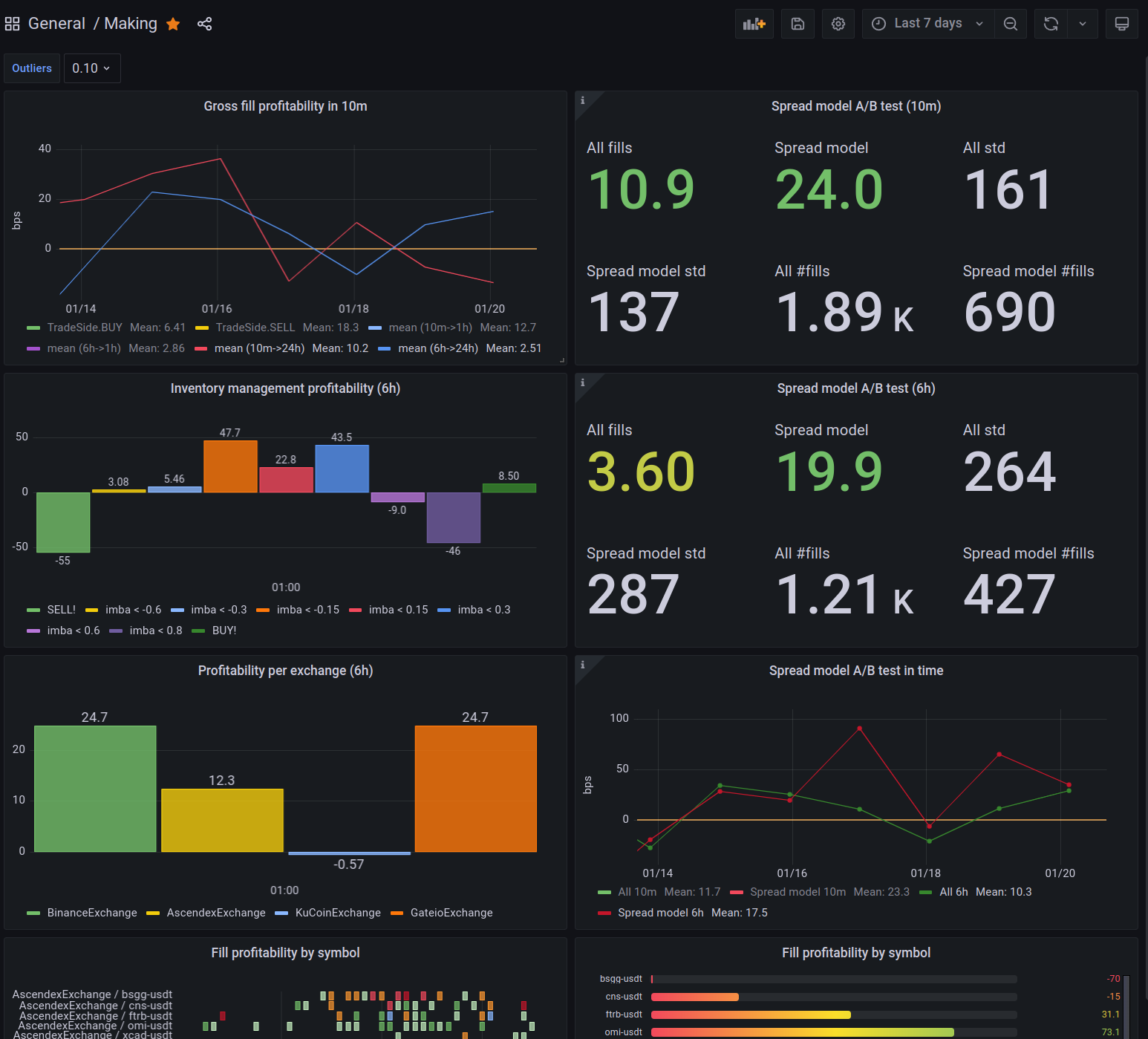Board our exciting journey to help decentralize finance and stabilize crypto

Liquidity Labs are currently a two-man-show project providing liquidity on centralized cryptocurrency exchanges, which means we simultaneously quote to buy and sell tokens. We trade in a way that is useful for the ecosystem. We do not speculate, do not participate in foul play such as manipulation or front-running. We try to contribute to stability and liquidity of the cryptocurrency markets so that crypto is less volatile, less risky and positions are less expensive to execute. And if we do it right, we can earn a lot of money in a highly scalable way too. By taking part of the profit from big companies and distributing them into our team, we are contributing to decentralization of the cryptocurrency market too. We try to be efficient and focused and it works well so far – we consistently achieve returns around 100% p.a.
So this is our mission. We are looking for skilled and motivated people who want to take part in it.
We currently need these people:
The first two roles should be available for at least 20h a week. We will be working remotely (ocassional coworking is preferred if you’re around). Therefore a good degree of independence is required. We will sign a contractor agreement with monthly payment.
We recently finished a setup allowing us to trade with around 2.5 bps fees on Binance and want to scale up the volume and leverage, which should multiply our returns. Here is where you come in. Technically this is a rough outline what you might be doing in the first 6 months depending on your specialization and interests:
We were pretty successful so far, just in the last 12 months we reached:
Compensation package consists of an agreed combination of fixed salary, personal bonus and most importantly a possibility of depositing your money into the fund. For experienced and long-term coworkers, it might be possible to get equity options as well.
Example: Full time contract, senior role, $3000 base. Up to $20k fund allocation in first 6 months, then $60k. In the last 12 months that would yield ~$7160/mo = ~155 000 Kc/mo total without taking any personal bonus into account.
We expect our profits will grow 2-10x in the next 12 months, so the salary from above example might get closer to $20 000/mo. The contract and fund allocations are reviewed yearly.
Participation: being part of tiny startup where you can double the revenues in a few months of work. Ocassional teambuildings, perhaps international later? Participation in huge upside.
Meaningful job: we don’t speculate, we reduce market slippage and volatility. This helps millions of crypto traders, even though it’s just a small difference we make. Our edge is systematic and will not disappear overnight.
We already started a small initiative benefitial to the community: affordable market data service for individuals, where we don’t aim for making money, but rather to help democratize crypto quant trading space, so that individual quants can compete with and beat big trading companies.
In the future we would like to help educate people in cryptocurrency investment space. I believe that crypto is a trap for many people who don’t really understand how things work. So they loose money by frequent day-trading or by blindly following influencers shilling their bags. Those people are creating some of the inefficiencies we trade, so it would only be fair to give back.
We model prices and volatility based on the actual market micro-structure. We use Python/Jupyter/Pandas and employ statistical and simple ML (GBT) techniques, but most of our alpha is in our infrastructure. We have a fully automated Python-based pretty-low-latency trading platform with spartan UI and a real-time evaluation system with charting in Grafana.

Grafana screenshot: top left shows total profitability in time, top right shows A/B test of new ML model, bottom shows profitability on individual pairs.